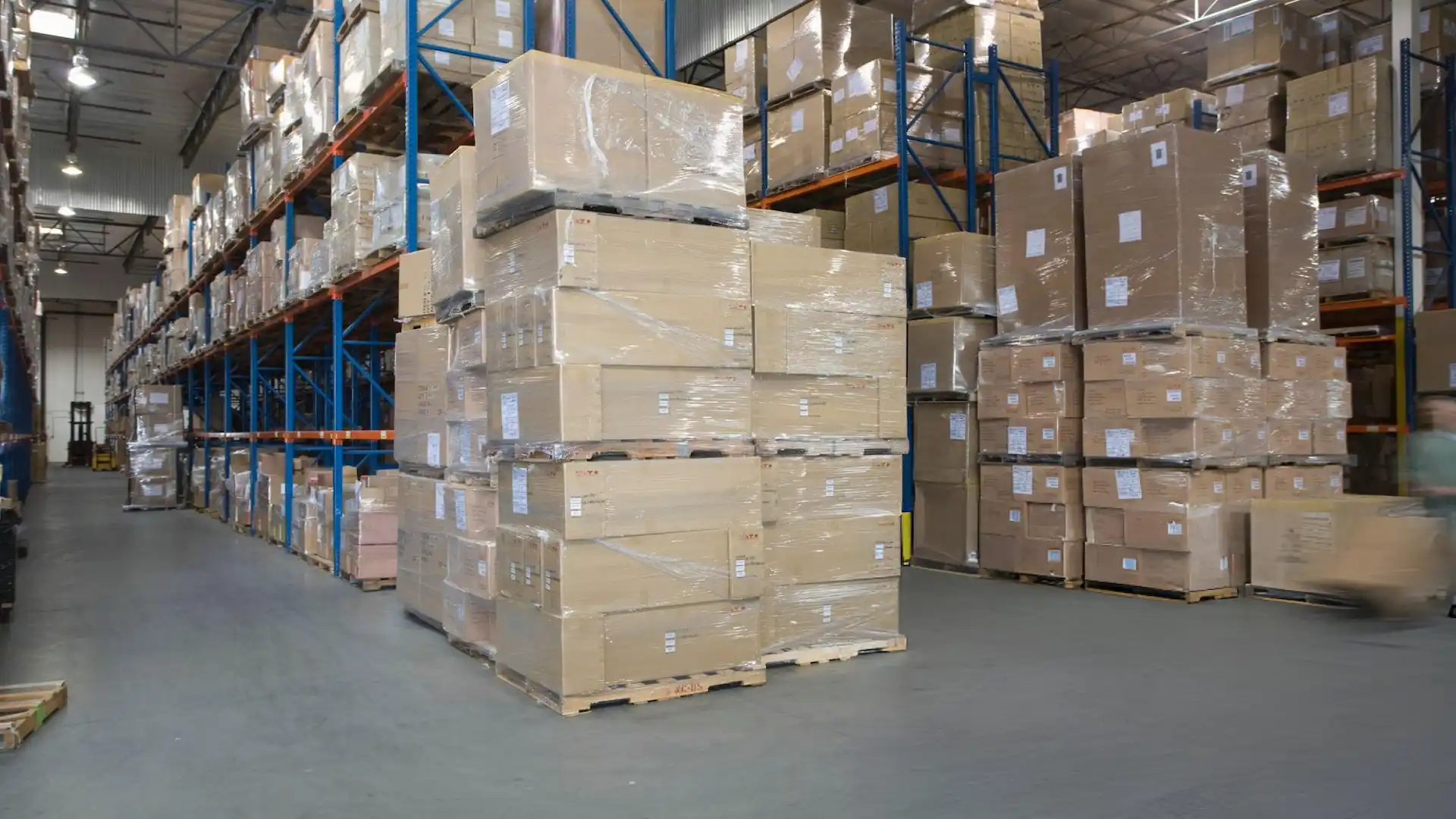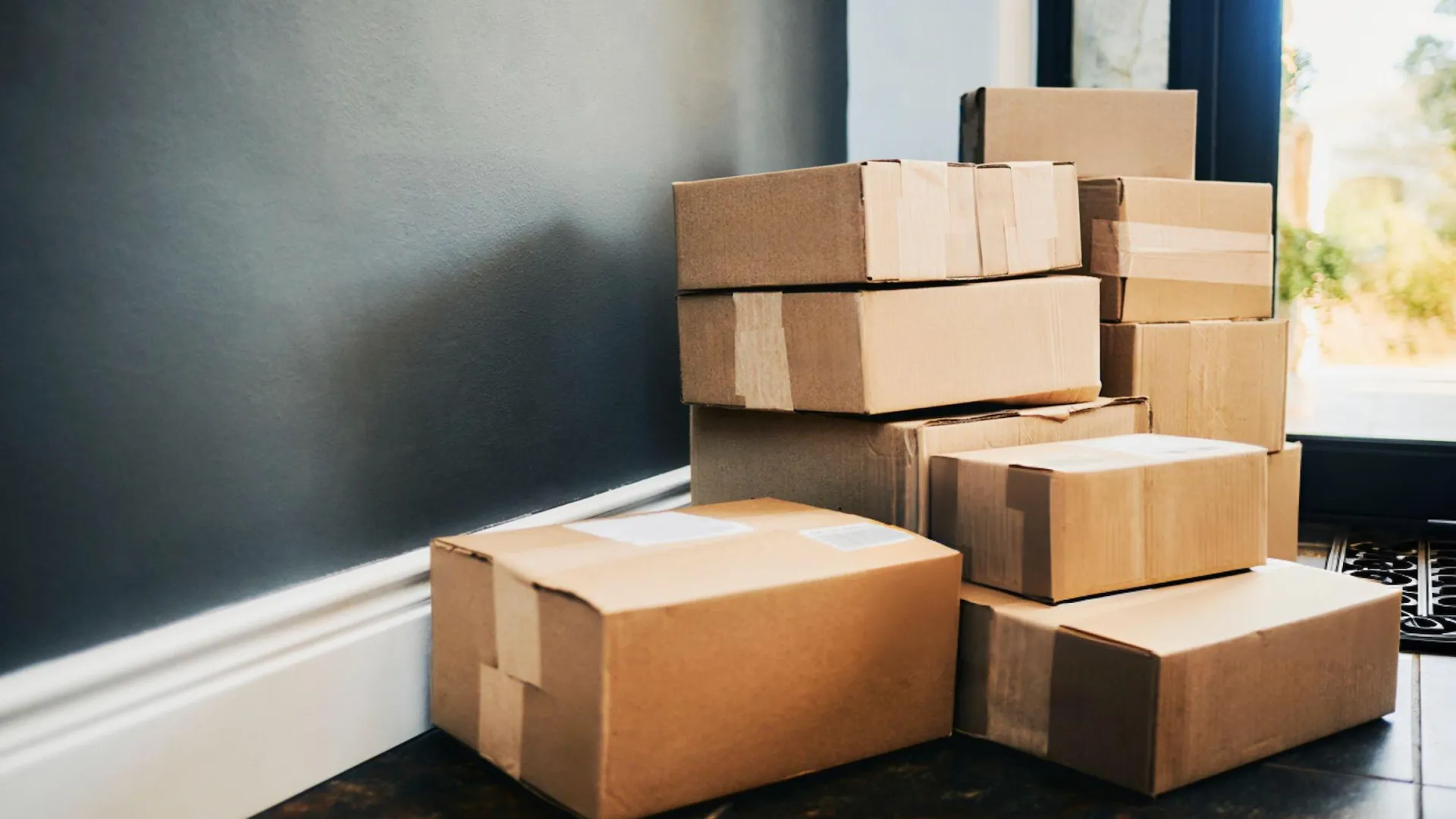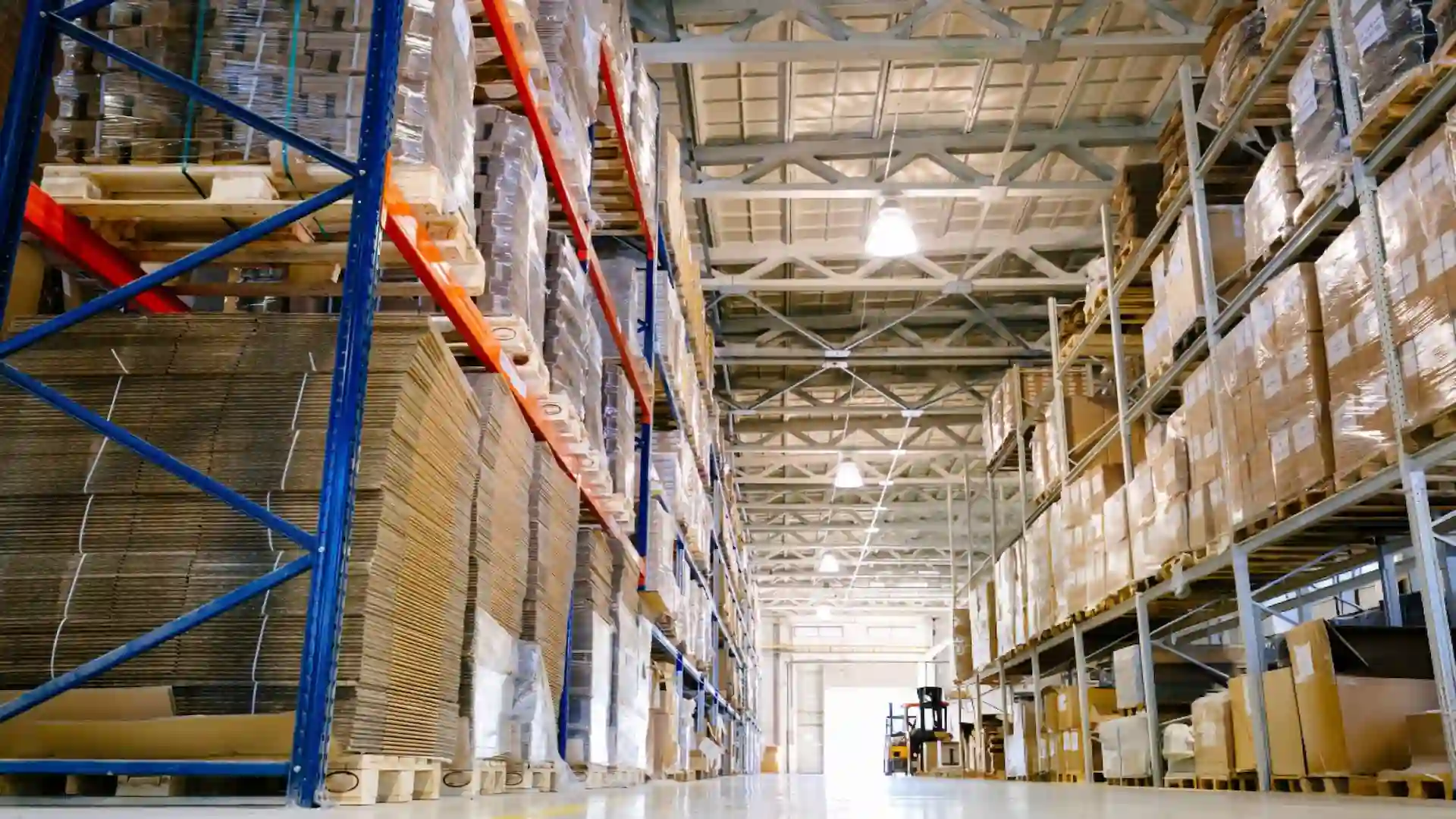The Comprehensive Guide To Carrier Tracking: UPS, USPS, Fedex, DHL eCommerce (2025)
.webp)
The world of ecommerce can be quite a challenge, especially when it comes to order fulfillment tracking orders in different statuses across the 4 major carriers.
Modern ecommerce brands can use the latest WMS (Warehouse Management System) to carefully manage inventory levels, orders, and improve the overall efficiency of their order fulfillment. But when the orders are shipped out, how can an ecommerce owner maintain control to ensure a smooth delivery?
The answer? Effective order tracking. Transit times, last-mile delivery, and shipping costs are out of your control - but you can control the customer’s experience.
Ecommerce order tracking is not simply sending a tracking number with a link to a portal anymore, it begins the instant a customer submits an order. Modern tech allows ecommerce owners to see every order’s status in their pipeline, and have complete control over what their customer sees throughout the fulfillment process. So, just how important is order tracking? Let's continue to learn about today’s secret to successful fulfillment!
Table of Contents
- What is Carrier Tracking?
- How do different carriers enforce tracking?
- Controlling the Customer Experience
- How do you resolve customer issues regarding order tracking?
- How does Atomix track orders?
What is Carrier Tracking?
Carrier tracking is an essential component of the shipping and fulfillment process for ecommerce businesses. Popular carriers such as USPS, FedEx, and DHL eCommerce offer advanced tracking technologies that allow businesses and customers to track the status of their shipments in real-time.
The carrier tracking process typically begins when a package is scanned and entered into the carrier's system. From there, the package is assigned a unique tracking number that can be used to monitor its progress throughout the shipping process.
As the package moves through various stages of transit, such as pick-up, sorting, and delivery, the tracking information is updated in the carrier's system. This information can include the location of the package, estimated delivery date and time, and any delivery exceptions or delays.
Customers can access the tracking information through the carrier's website or mobile app, allowing them to stay informed about the status of their package and plan accordingly. Advanced tracking technologies such as GPS and RFID can provide even more detailed tracking information and help businesses optimize their shipping and fulfillment processes.
.png)
How do different carriers track orders?
Efficient order tracking has become a permanent fixture for new and emerging ecommerce brands to build trust with their customers. While many carriers offer order tracking services, some are optimized for specific clients more than others. In the short guide below, we cover how some of our major carriers differ in their order tracking.
USPS
As one of the most well-known couriers in the US, the USPS has been providing Americans with one of the most user-friendly shipping options available in the last 50 years. In general, USPS is best at shipping small packages under 20 lbs, however they are capable of delivering parcels up to 70 lbs in weight.
To ensure these packages are delivered to the right destination, USPS begins tracking packages as soon as a sender/shipping partner notifies them to expect a parcel. A Tracking Number is then generated for that delivery, and it is included in the shipping label placed on the parcel. USPS then accepts the package for transit, and continues to send regular updates to the recipient through the USPS app, by text, or by email.
UPS
In comparison with USPS and their optimization for small packages, UPS handles heavy and bulky shipments much more efficiently. While USPS has a 70 lb. weight limit, UPS offers deliveries on packages up to 150 lbs.
Because UPS tends to handle a lot of B2B deliveries, their tracking system is not optimized for the average consumer. While order updates are technically in real-time, the updates really only happen when the package is scanned at each facility in the delivery process.
This means your order updates will be kept current on roughly a 24-hour basis, rather than implementing GPS tracking or RFID to see exactly where your product is. Instead of seeing messages like “your package is in Milwaukee, Wisconsin,” a customer might see anything from “Order processed: on its way to UPS” to “On vehicle for delivery.”
FedEx
Fun fact: FedEx were arguably responsible for the invention of the order tracking system in 1979! Although they pioneered the popularity of order tracking - FedEx’s order tracking system looks very similar to that of its competitors.
One of the main differences, however, is the range of code types that FedEx can use for tracking. Instead of being limited to an “order number” or a “tracking number,” FedEx is able to track packages with a:
- Tracking number
- Reference number
- Transportation control number
- FedEx Office order number
- Door tag number
However - because of the wide range of codes and over 1 million tracking requests inbound daily, FedEx only provides “milestone tracking.” This means that packages are only scanned at “milestone” points of the shipping process, rather than at every facility it passes through. Additionally, it is not uncommon for packages to go unscanned for more than 24 hours.
DHL eCommerce
The 1970’s were a revolutionary period for order fulfillment services. While FedEx pioneered the order tracking number, DHL eCommerce was the only courier in the 70’s that offered overnight delivery service. Because their order tracking was implemented a few years after, DHL’s tracking services look most similar to FedEx due to their success.
However, a key difference in DHLs order tracking is the ability to alter an order once it has been dispatched. With many carriers, a customer is able to redirect a package to a new location or update shipping priority while it is mid-transit. Due to the complexity of DHL’s network and their existing legacy systems, once an order has gone out - all you can do is wait for delivery.
Controlling the Customer Experience
When an order has been received and the shipping process begins, the first step outside of beginning the pick process is keeping the customer in the loop. From a customer’s perspective, it’s difficult to control much of anything after the order has been placed.
1. Customer selects shipping method
This is one of the final steps in placing an order online - and helps us determine what a customer prioritizes: their time, or their money. Whether a customer chooses 2-day, next day, or economy; they are setting expectations for when they expect the package to arrive.
2. Pick and pack orders on time
Making sure your warehouse team is on top of orders is essential for a smooth running 3PL. If orders are not packed on time, a 3PL can’t blame their carrier for shipping delays (and should probably consider expanding.)
3. Selecting the right carrier for delivery
Depending on your brand and/or your customer preferences, choosing the correct carrier to make each delivery is crucial to providing smooth deliveries. As a 3PL, we can’t do our job operating like lone wolves - we create and nurture our partnerships to maintain a robust carrier network.
This network is determined by speed, reliability, and a number of other factors. However as a heavily tech-based 3PL, our carrier selection is automatically taken care of (as with most modern 3PLs).
4. Offer order tracking services
This is the BIG one! Today, ecommerce customers expect robust order tracking to enhance their shopping experience. This gives both you and your customer a clear perspective over the entire order shipping process, portraying your brand as being trustworthy and reliable.
Most carriers offer order tracking through an online portal where customers can create an account and use the service, but not everyone wants to create an account just to use order tracking. To create a simple and easy solution, Atomix offers a branded tracking portal for all clients and customers. Our portal is designed for the purpose of creating transparency between a brand owner and their customers - a core value in our mission to enhance ecommerce!
How do I resolve order tracking issues?
When issues come up with order tracking it affects everyone involved; the end customer, the carrier, and the seller alike. Customers and sellers experiencing delays or losses in order fulfillment can feel confused and frustrated with the carrier, because it is on them to close the gap between the seller and purchaser.
If things aren’t resolved quickly, it can reflect poorly on the carrier’s reputation and impede business growth. Fortunately, we have created a list of 5 ways business owners or carriers can mitigate the risk of losing business due to poor order tracking.
1. Investigation
This may seem redundant, but the first step to resolving an issue is identifying the cause. Determine what went wrong with the tracking service and why it failed, this will help you determine the best course of action.
2. Contact the carrier
When the cause of the issue has been identified, contact the carrier responsible for the delivery. Provide them with as much information as possible such as dates, tracking numbers, or any other relevant information.
3. Communicate with the customer
After contacting the carrier, inform your customer of the problem status and what steps you are taking to resolve the issue. Then, offer alternatives such as a new delivery date, product replacement, or a refund.
4. Take action
Depending on the nature of the issue, a business owner may need to take additional steps to find a complete solution. For example, if the package was damaged or lost, you may need to file a claim with the carrier responsible or schedule a date for a replacement delivery.
5. Follow up with the customer
In most cases, this is arguably one of the most important steps in problem resolution. Once the issue has been resolved, make sure to reach out and follow up with the customer to ensure they are satisfied with the resolution. In addition to increasing CLV, following up with your customers builds loyalty and trust in your brand with those who may still be prospective customers, and reassures existing customers that you care about their satisfaction.
How does Atomix track orders?
So, after learning a little more about the various standards for order tracking, it turns out it isn’t as simple as it sounds right? As a 3PL, we are responsible for making sure that each of our clients’ customers are satisfied with their shopping experience. Learn how Atomix’s innovative 3PL order fulfillment services enhance transparency and customer satisfaction.
When a customer can be confident that their package is where your tracker says it is, it portrays your brand as dependable and transparent. This will increase CLV (Customer Lifetime Value), build customer loyalty, and will improve your brand image overall.
So, how does Atomix provide order tracking? As it stands, our physical transport is performed by our carriers. To simplify the tracking process, our tracker is a compilation of tracking information from all of our carriers in one place. No more needing to make an account and log into a “tracker portal” to find tracking information for your customers, our app has all the information you need to provide a seamless shopping experience!
Conclusion
In conclusion, finding the right carrier with effective tracking services is absolutely essential for the success of any ecommerce brand. After taking the time to compare four of the major parcel carriers, it is clear that each carrier has unique features to cater to the needs of specific customers.
Real-time tracking, access to delivery history, and delivery notifications are some of the most critical qualities to consider when selecting a carrier. Proper tracking services ensure your customers get a smooth, easy, and transparent shopping experience, with all of their packages arriving on time and in great condition.
Get your fulfillment quote today!
FAQ Section: Ecommerce Order Tracking and Delivery
What is Carrier Tracking?
Carrier tracking allows businesses and customers to monitor the status of shipments in real-time. It involves a tracking number assigned to a package, which provides updates as the package moves through various transit stages.
How do different carriers track orders?
Each carrier employs unique tracking systems:
- USPS: Offers regular updates via app, email, or text. Packages are tracked from acceptance to delivery.
- UPS: Tracks larger, heavier shipments with updates at major milestones.
- FedEx: Tracks using various codes (e.g., tracking number, door tag) but focuses on milestone updates.
- DHL eCommerce: Provides tracking but has limitations on mid-transit adjustments.
How can businesses control the customer experience during order tracking?
Businesses can enhance the customer experience by:
- Providing robust tracking portals.
- Keeping customers informed with timely updates.
- Ensuring smooth order fulfillment through partnerships with reliable carriers.
How does Atomix Logistics enhance order tracking?
Atomix Logistics consolidates tracking information from multiple carriers into a single branded portal. This provides businesses and customers with seamless access to real-time tracking updates, enhancing transparency and trust.
How can order tracking issues be resolved effectively?
- Investigate: Identify the issue and its root cause.
- Contact the Carrier: Provide relevant information to resolve the problem.
- Communicate: Keep the customer informed about the resolution process.
- Take Action: Replace, refund, or reschedule deliveries as needed.
- Follow Up: Ensure customer satisfaction to build loyalty and trust.

.svg)
.svg)
.svg)




